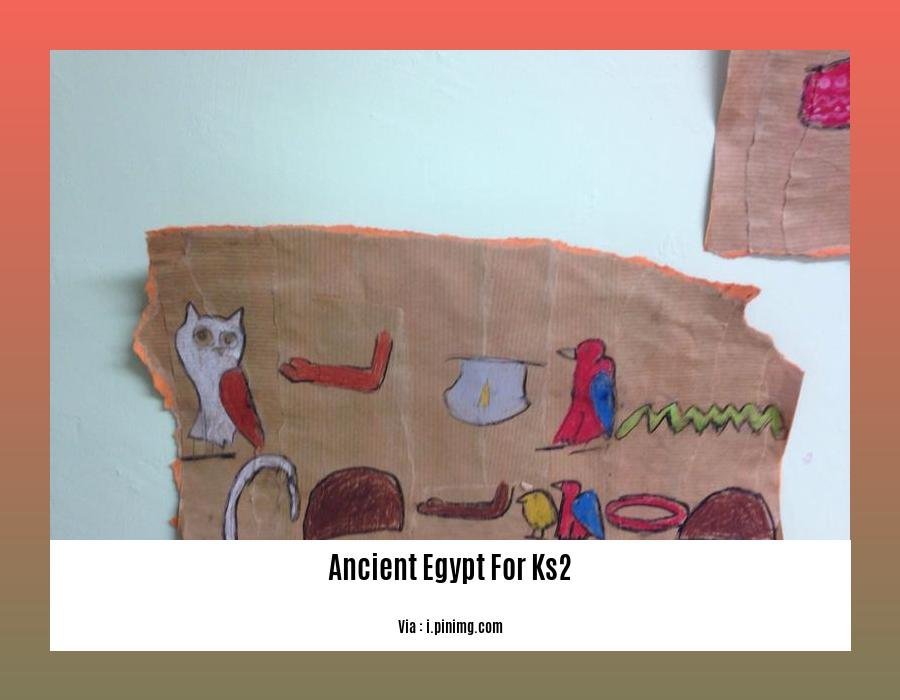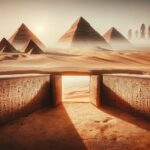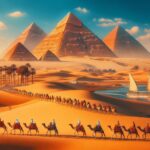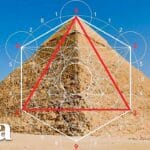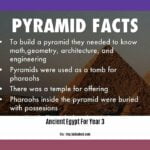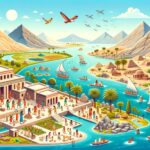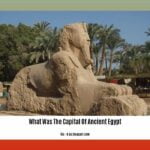Embark on a thrilling adventure through the sands of time in [A Journey Through Ancient Egypt for KS2: Unraveling the Mysteries of a Timeless Civilization]. Discover the wonders of this ancient civilization, from the towering pyramids of Giza to the enigmatic hieroglyphics that hold secrets of the pharaohs. Unearth the fascinating stories behind Tutankhamun’s tomb, explore the Valley of the Kings, and learn about the daily lives of ordinary Egyptians. Prepare to be captivated by the grandeur of ancient Egypt, as you unravel the mysteries of this remarkable civilization.
Key Takeaways:
- Ancient Egypt is a timeless civilization with a rich history and culture.
- Artifacts like the Great Pyramids, Valley of the Kings, and Rosetta Stone provide valuable insights into the ancient Egyptian civilization.
- We have learned about Ancient Egypt through hieroglyphs and other written records, which tell us about their history, culture, and religion.
- Relevant URL sources for further exploration:
Ancient Egypt for KS2: Unveiling the Secrets of a Timeless Civilization
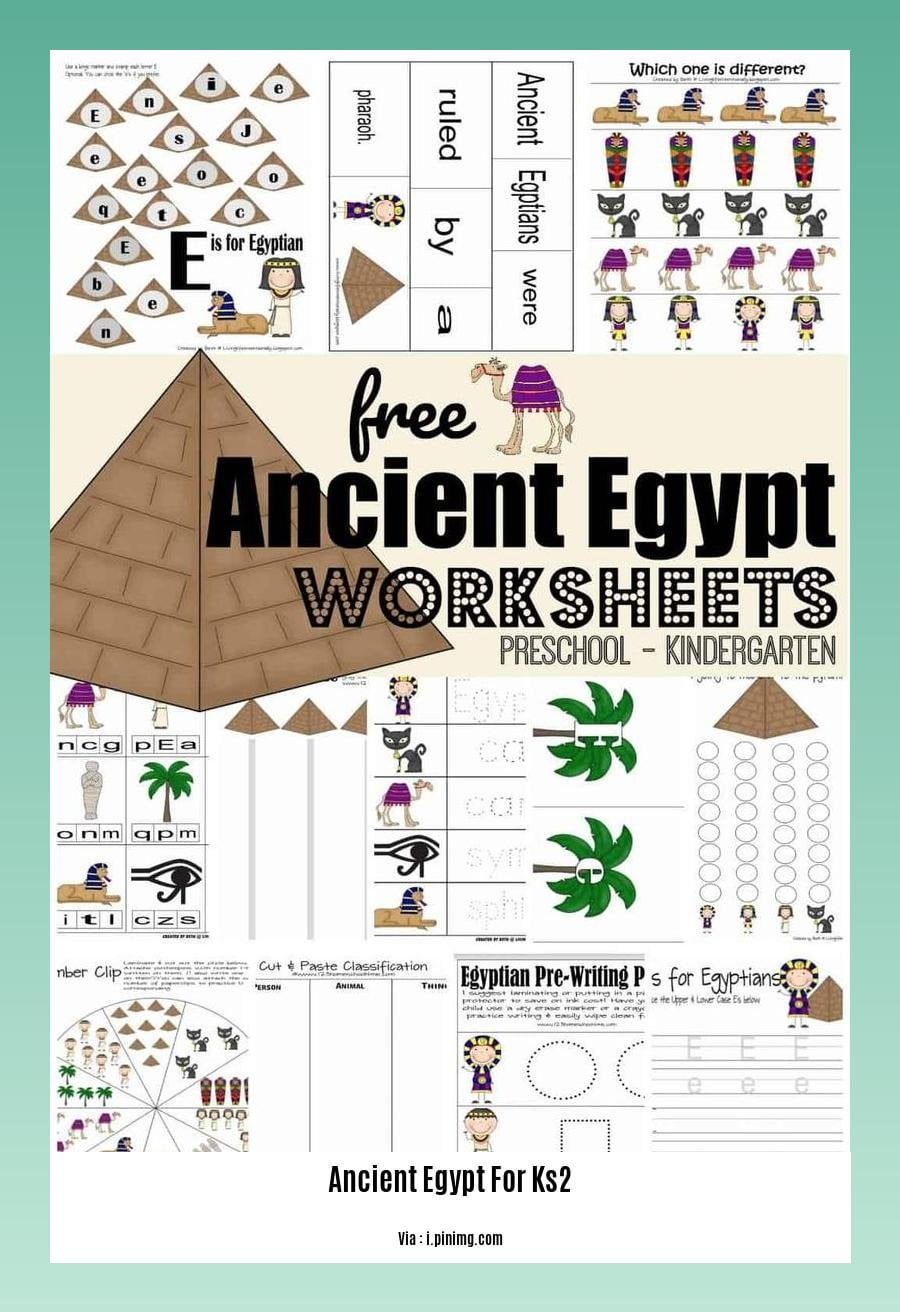
Greetings, young explorers! Welcome to an extraordinary adventure through ancient Egypt, a land of pharaohs, pyramids, and hieroglyphs. Join us as we embark on a journey to discover the wonders of this captivating civilization.
What Makes Ancient Egypt So Special?
Ancient Egypt holds a unique place in history, known for its remarkable achievements in architecture, art, and science. It’s a civilization that flourished for over 3,000 years, leaving behind a legacy that continues to fascinate people worldwide.
The Timeless Pyramids
One of the most iconic symbols of ancient Egypt is the awe-inspiring pyramids. These colossal structures, built as tombs for pharaohs, showcase the engineering prowess of the ancient Egyptians. The most famous pyramids are the Great Pyramids of Giza, including the Pyramid of Khufu, also known as the Great Pyramid.
Mysterious Hieroglyphs
The ancient Egyptians developed a unique writing system called hieroglyphics. These intricate symbols, often featuring images of animals, plants, and everyday objects, were used to record everything from religious texts to everyday transactions. Learning to decipher hieroglyphs has allowed us to unlock the secrets of ancient Egyptian history and culture.
Captivating Art and Architecture
The ancient Egyptians were skilled artists and architects. Their intricate paintings and sculptures adorned temples, tombs, and palaces, showcasing their exceptional artistry. The temples of Karnak and Luxor are prime examples of their architectural brilliance, with towering columns and intricate carvings.
Gods and Goddesses
The ancient Egyptians believed in a pantheon of gods and goddesses, each with unique powers and responsibilities. Some of the most well-known deities include Ra, the sun god; Osiris, the god of the underworld; and Isis, the goddess of magic. Their stories and relationships provide insights into the beliefs and values of ancient Egypt.
Exploring Ancient Egypt Today
While ancient Egypt no longer exists, its legacy lives on through the many artifacts, monuments, and records that have survived. Visiting museums, reading books, and watching documentaries are great ways to learn more about this captivating civilization. You can even try your hand at hieroglyphics or build your own mini-pyramid!
Join the Adventure!
The journey through ancient Egypt is filled with excitement and wonder. So, grab your imaginary hat and embark on an adventure to discover the secrets of this timeless civilization. Remember, the more you learn about ancient Egypt, the more you’ll appreciate its incredible achievements.
Discover how the ancient masters prepared their meals, from simple roasting over open flames to complex methods like fermentation and smoking: ancient cooking methods.
Delve into the culinary wisdom of the past and explore a diverse range of ancient cooking techniques, and uncover the secrets of preparing meals in a way that has stood the test of time.
Journey back to the time of the pharaohs and explore Ancient Egypt for Year 3, a comprehensive resource designed for educators and students alike, offering a captivating insight into the culture, history, and daily life of this remarkable civilization.
Hieroglyphics and Literature
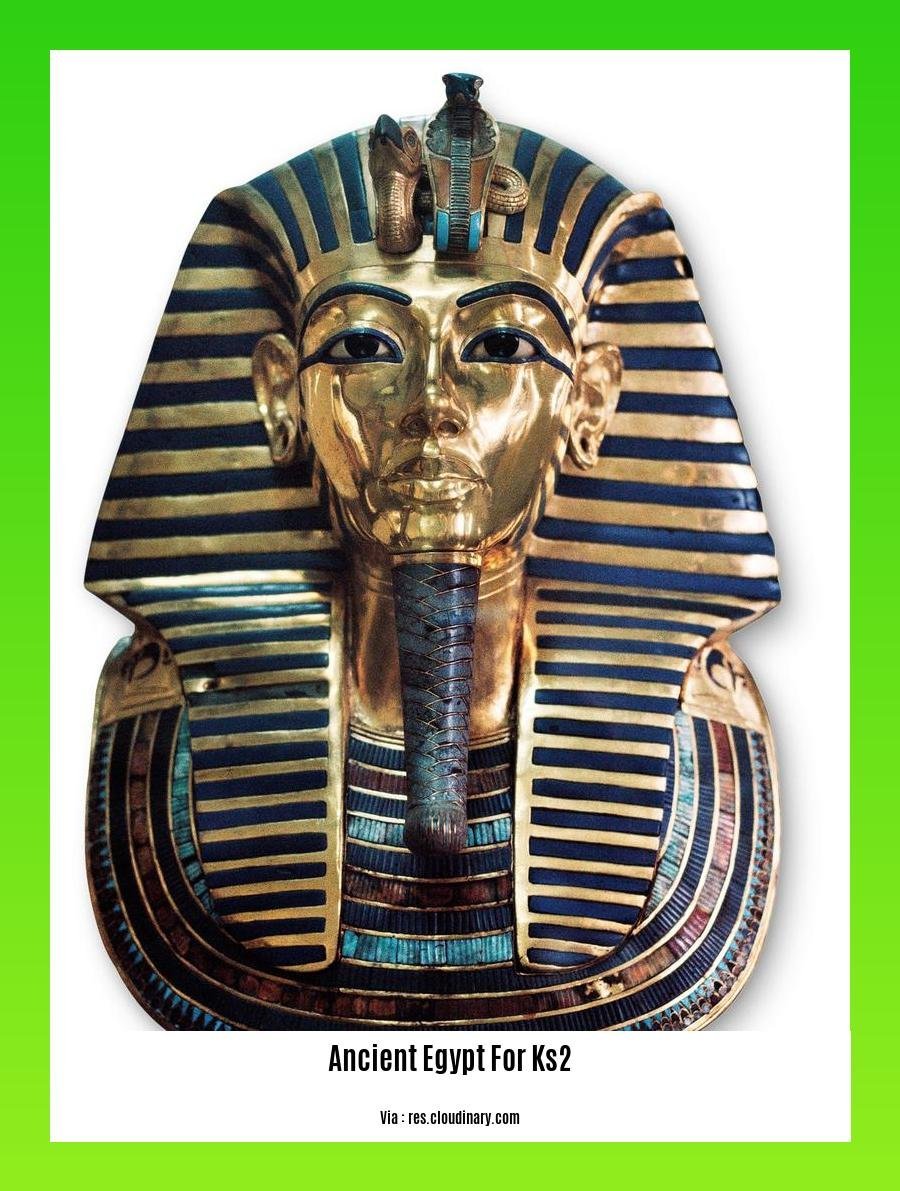
Imagine a world where stories were told not with words but with pictures. That’s the world of ancient Egypt, where hieroglyphics brought tales to life. Hieroglyphics were more than just a way of writing; they were a sacred language believed to have been gifted by the gods. Each symbol, each stroke, held a deep meaning, capturing the essence of an idea or a sound.
Now, let’s journey back in time and explore the captivating world of hieroglyphics and literature in ancient Egypt:
Deciphering the Sacred Script
For centuries, hieroglyphics remained a mystery, a code that was lost to time. But in the early 19th century, a Rosetta Stone, a slab of basalt inscribed with the same text in three scripts, including hieroglyphics, became the key to unlocking this ancient language.
Using the Greek text on the Rosetta Stone as a guide, scholars began to piece together the intricate puzzle of hieroglyphics. It was a painstaking process, but with each symbol deciphered, the door to a rich literary world swung open.
Hieroglyphs in Everyday Life
Hieroglyphics and Literature were not confined to the walls of temples or tombs. They were also used in everyday life, from recording trade transactions to scribbling love letters. Imagine a grocery list written in hieroglyphics, with a drawing of a loaf of bread, a jug of milk, and a chicken!
Sacred Texts and Epic Tales
Hieroglyphics found their way into religious texts, immortalizing myths, legends, and the teachings of wise pharaohs. The Book of the Dead, a collection of spells and prayers, guided the deceased through their journey to the afterlife. The Pyramid Texts, inscribed on the walls of pyramids, contained magical incantations to protect the pharaoh’s spirit.
And let’s not forget the epic tales of ancient Egypt. The Story of Sinuhe, a tale of adventure and intrigue, and the Tale of Two Brothers, a story of love, betrayal, and magic, are just a few examples of the rich literary heritage preserved in hieroglyphics.
Key Takeaways:
- Hieroglyphics were more than a writing system; they were a sacred language believed to be gifted by the gods.
- Hieroglyphs were used for over 3,000 years, from about 2900 BCE to the 100s and 200s CE.
- Hieroglyphs were used on tombs, pottery, walls, papyrus, and writing boards to record various information.
- Deciphering hieroglyphics was a significant milestone in Egyptology, with the Rosetta Stone playing a crucial role in understanding the writing system.
- Hieroglyphics and Literature provide valuable insights into ancient Egyptian culture, history, and beliefs.
Citations:
BBC – History – Ancient Egypt
National Geographic Kids – Ancient Egypt
Gods, Goddesses, and Religion
Hey, let’s time travel to learn about the divine beings and religious beliefs that shaped ancient Egypt, shaping their civilization. The ancient Egyptians had an elaborate pantheon of gods and goddesses, each with unique powers, roles, and connections to different aspects of life.
Concepts You Should Know:
- Polytheism: The ancient Egyptians were polytheistic, believing in multiple gods and goddesses.
- Anthropomorphism: They depicted their deities in human form, often with animal heads, to make them relatable.
- Temples and Shrines: Elaborate temples and shrines were dedicated to various deities, serving as centers of worship and religious rituals.
- Pharaohs as Gods: Pharaohs were considered divine and the earthly representatives of the gods.
- Afterlife: The ancient Egyptians believed in an afterlife, with beliefs revolving around judgment, the weighing of the heart, and the journey to the underworld.
Meet the Divine Realm:
- Ra: The mighty sun god, often depicted as a man with a falcon head, is the creator and giver of life.
- Osiris: The god of the underworld and fertility, Osiris is the divine judge of the dead.
- Isis: The goddess of magic, motherhood, and healing, Isis is the epitome of devotion and loyalty.
- Horus: The sky god and protector, Horus is often depicted as a falcon or a man with a falcon head.
- Thoth: The god of wisdom, writing, and magic, Thoth is the keeper of knowledge and secrets.
- Anubis: The jackal-headed god is responsible for guiding souls through the journey to the afterlife.
Key Takeaways:
- Ancient Egyptians believed in a vast pantheon of polytheistic gods and goddesses.
- Temples and shrines served as central places of worship and rituals.
- Pharaohs were considered divine and connected to the gods.
- Beliefs in the afterlife included the weighing of the heart and the journey through the underworld.
- Each deity had unique powers, roles, and connections to different aspects of life.
Relevant URL Sources:
- URL1: National Geographic Kids: Gods and Goddesses of Ancient Egypt
- URL2: BBC Teach: KS2 History: Ancient Egypt. Gods and goddesses
Daily Life and Social Structure
In ancient Egypt, everyday life revolved around the Nile River, the lifeblood of the civilization. Daily Life and Social Structure were closely intertwined, with people’s occupations, social status, and even religious beliefs influenced by their proximity to the river.
Key Takeaways:
- Social Hierarchies:
Egyptian society was highly stratified, with the pharaoh at its apex, followed by nobles, priests, scribes, artisans, farmers, and slaves.
Roles and Occupations:
Labor was often divided based on social class, with farmers tending the fields, artisans crafting goods, priests performing rituals, and scribes recording important events.
Family Life:
Families were the cornerstone of ancient Egyptian society. Children were highly valued, and both boys and girls received education. Marriage was common, and women enjoyed certain rights and legal protections.
Food and Cuisine:
The staple diet of ancient Egyptians included bread, beer, vegetables, and fruits. Wealthy individuals feasted on meat, poultry, and fish, while the poor often relied on simple meals.
Housing:
Most Egyptians lived in small, mud-brick houses, clustered together in villages or towns. Wealthy families resided in spacious villas, often adorned with elaborate decorations.
Religion and Beliefs:
Religion played a significant role in everyday life. Egyptians worshipped a pantheon of gods, including Ra, the sun god, and Anubis, the god of the dead. Rituals, ceremonies, and festivals were integral parts of religious life.
Education:
Education was primarily reserved for boys from wealthy families who aspired to become scribes or priests. Subjects included reading, writing, mathematics, and religious texts.
Clothing:
Clothing styles varied depending on social status. The poor wore simple linen garments, while the wealthy adorned themselves in colorful, intricately designed clothes made from fine materials.
Healthcare:
- Ancient Egyptians had a rudimentary understanding of medicine. They used herbs, minerals, and surgical techniques to treat illnesses and injuries. However, medical care was often limited, and diseases were common.
Relevant URL Sources:
Ancient Egyptian Daily Life | UKS2 – Y5 & Y6 | English
FAQ
Q1: What was the most important god in ancient Egypt?
A1: Ra, the sun god, was the most important god in ancient Egypt. He was worshipped as the creator of the world and the giver of life.
Q2: What was the purpose of hieroglyphs?
A2: Hieroglyphs were used to record various information, including beliefs, gods, clothing, everyday life, and laws. They were used on tombs, pottery, walls, papyrus, and writing boards.
Q3: What was the role of the pharaoh in ancient Egypt?
A3: Pharaohs ruled over Ancient Egypt and were buried in huge tombs. They were believed to be the descendants of the gods and held absolute power.
Q4: What was the staple diet for ancient Egyptians?
A4: The staple diet for all ancient Egyptians (both rich and poor) was bread. They also ate vegetables, fruits, and meat.
Q5: What was the significance of the Nile River to ancient Egyptians?
A5: The Nile River was the lifeblood of ancient Egypt. It provided them with food, water, and transportation. The ancient Egyptians built their civilization along the banks of the Nile.
- Sept 31 Myth: Unveiling Calendar Secrets - March 18, 2025
- How Long & Till December 18, 2025: Accurate Countdown Guide - March 18, 2025
- Discover Japanese Artists: A Complete History - March 18, 2025
